One of my obsessions when talking about finishing is sanding - both sanding the wood before finishing and sanding between coats. I firmly believe it is a prerequisite for quality products. Some time ago I wrote about sanding, approaching the subject from the point of view of production, of working in a factory, where there are sanding machines and special technologies. This time I aim to say a bit about sanding to those who love DIY, have DIY projects or want to start tinkering.
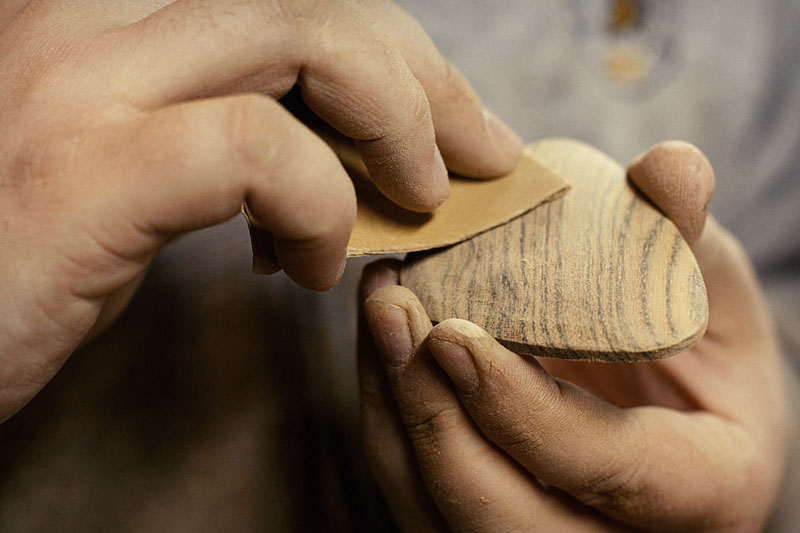
First of all, there are two stages of sanding that influence the quality of the final product. One is wood sanding or white grinding which is done before coloring and varnishing the wooden object. The other is sanding between layers varnish. Both are done with abrasive paper or sponges, but the grits differ. I'll take them one at a time.
Wood sanding
To build an object, wood has to be cut, drilled and worked with various tools. All these operations act on the wood fiber, breaking it. When you move your hand over the wood, you can feel the rough edges scratching, some more, some less. These are the ends of the wood fiber left after mechanical processing. When wood is sanded, these fiber ends are broken in a way organized so that they all behave the same, evenly absorbing color and lacquer.
While the object is being made, the wood may be knocked, scratched, beveled, leaving marks. Most of these marks only become visible after the color has been applied. Proper sanding removes marks, evens the surface and reduces the risk of staining.
The wood is sanded with fine-grit sandpaper, 80 to 220 grit, or coarse and medium abrasive sponges. The fineness number is written on the back of the sanding paper. For the best surface quality, it is recommended to use two types of sandpaper, a coarse one to break up the fiber and a finer one to smooth it. For example, you could use 80 paper first, followed by 120 or 150. Or 100 followed by 150 or 180. In the case of abrasive sponges, start with the coarse sponges, followed by the medium.
Wood is always sanded along the grain, concentrating on the areas where you can feel the fiber ends. It is not recommended to use sandpaper with a grain size greater than 220 because fine wood dust clogs the grain, blocking absorption. This causes light-colored stains.
For ease of use, the sanding paper can be wrapped around a rectangular piece of wood. This applies an even force to the entire surface of the wood, resulting in better sanding results.
When sanding profiled elements - edges, table or chair legs, cornices - the use of abrasive sponges is recommended because they can be molded, which improves the quality of the sanding.
In the sanding process, the quality of the abrasives decreases. Abrasive grains stuck to paper or cloth melt or fall off. Fine wood dust also penetrates between them and settles there, reducing the sanding ability of the paper. As soon as you notice that the result is not as good as it was in the beginning, the paper must be replaced. Do not economize at this point in the project. Any cutbacks made now will pay off later, at the finishing stage, when mistakes are much harder to rectify.

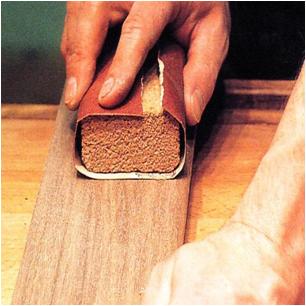
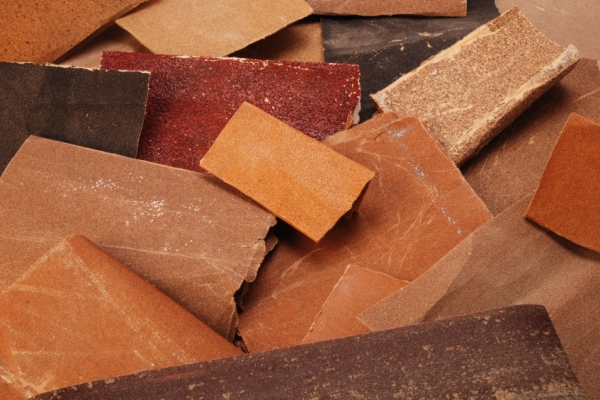
Sanding varnish layers
The sanding between coats is done to ensure that the object has a nice touch, a smooth and pleasant to the touch. When the staining solution (stain) and the first coat of varnish are applied, the wood absorbs these materials and the wood grain rises. This phenomenon is much more pronounced with waterborne products, because of the natural tendency of wood to absorb water. After the varnish has dried, the raised grain feels unpleasant to the touch, being very stiff due to the varnish trapped in it. In order to make the surface smooth and pleasant to the touch again, the varnish must be sanded through the varnish layer.
The materials used are still sandpaper or abrasive sponges, but the grit is finer. Fine and very fine sponges are used and the paper should be minimum 240. If the final lacquer will be glossy, the sandpaper used should be minimum 400. As already said, pike lake accentuates defects and fine scratches from coarser abrasives become very visible.
The sanding between coats is done all along the fiber, after the varnish layer is completely dry. When the lacquer is thoroughly dry, a fine white powder will result from sanding. If the drying is not complete, the sanding is heavy, the paper will stumbles and cover it with a gummed coat of varnish. The next coat is applied only after the dust has been completely removed with the cloth.
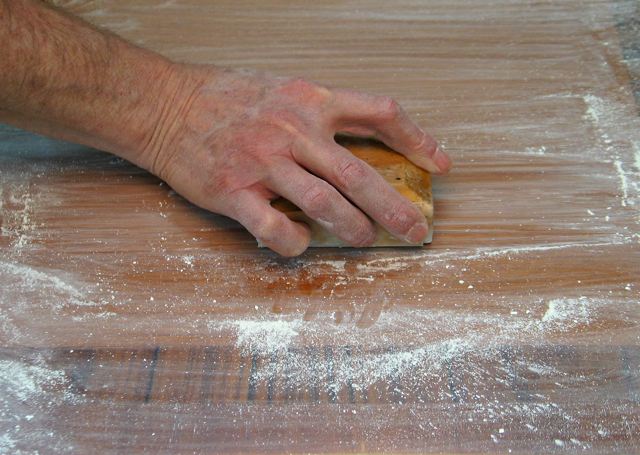
Refurbishing old furniture
A special case of sanding is when you want to refresh or change the finish. Due to use, furniture and finished wooden objects become covered with a fine layer of dust and dirt. In order for the new coat of varnish to adhere, this patina of time must be removed.
The object is cleaned by wiping it with a cloth, water and detergent. All furniture can be washed, no matter what it is covered with. The important thing is that it is wiped quickly and thoroughly after washing. Then sand the old coat lightly with 280-320 sandpaper (over 400 for gloss varnish) and apply the new coat of varnish.
Be careful, always check the compatibility between the old coats and the varnish to be applied. To do this, apply a little varnish to a small, inconspicuous area of the furniture and wait for it to dry. If nothing happens - cracking, swelling, peeling - it can be used. Furniture that has been maintained over time with products such as Pronto, which contain wax, should be washed and sanded until the wax layer is completely removed. Wax is the final finishing coat and nothing can be applied over it. If it is not completely removed, the varnish will not adhere and will peel off easily.
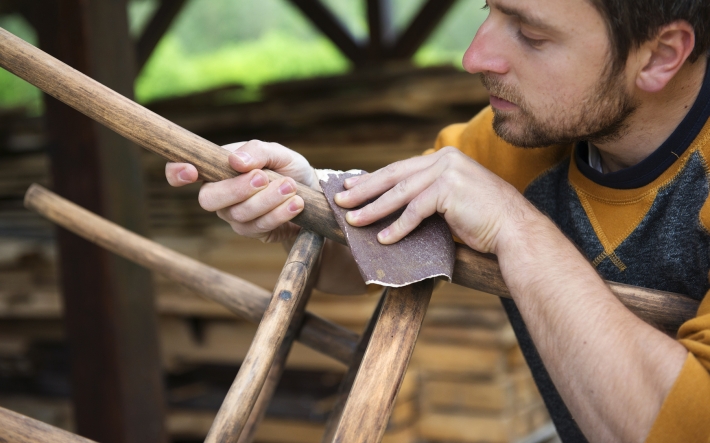
Sanding is an important operation in the wood finishing process. Quality objects can only be obtained if both the wood and the intermediate layers of varnish are sanded correctly. A new finish only adheres to the old one if it has been cleaned and sanded beforehand.
I wish you success and I look forward to hearing how your projects are going. Remember, if you need help and information, I'm here. ☺






















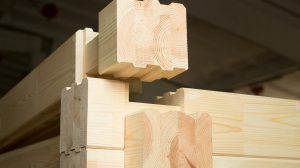


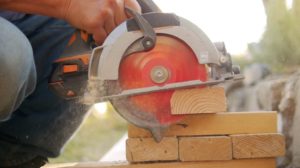
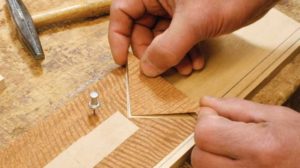






Excuse me, but the article is ridiculously weak. Even if it's meant to be a popularization article it's probably not aimed at 3 to 4 year olds right?
I'm sorry the article doesn't live up to your expectations. I am sure there are things you know very well, but I have met people who do not know this information. That's where the idea for the article came from. It is information for people whose profession has nothing to do with wood but who want to remake or make an object out of wood. I hope that in the future you will find interesting information too.
It is good to specify why the article is weak, or where the mistakes are. There are many beginners who read your comment and get confused.
An important element was omitted before varnishing. This is the degreasing of the wood, which can be done with very good results with technical alcohol. As I have recently varnished about 250-280 square meters of wood (paneling, doors, windows, furniture, etc.) in my house, and on all the woodwork the fly "skates", as they say, every square cm was treated as follows: sanding, dusting, degreasing, first "coat" of varnish. After drying, the second coat of varnish followed. Again sanding, again dusting. Then came the third coat of varnish, the final coat, after which I sanded only in the places that seemed necessary. Periodically, with a natural bristle brush (on the ceiling), I wipe off the dust that has settled. For the rest, I use finet. Thanks for your advice.
Thank you for sharing your experience. Normally wood does not need degreasing before finishing. Sanding is sufficient. In your case the wood probably came into contact with greasy products during cutting or wiping, or was even resin (in the case of resinous wood). Congratulations on the technical alcohol idea. It is very good. You can also use nitrocellulose thinner or universal thinner. And the maintenance you do very well. And I choose not to use commercial maintenance products. If they are applied directly to the furniture or not polished very well, the furniture remains slightly soggy and more dusty. I wish you all the best and continued success.
In case anyone needs the information/is curious: by chance, I once saw someone cleaning some old window frames by sandblasting. The frames had a complex relief, which would have been very difficult to clean by sanding (possibly using stiff bristle brushes on a Dremel tool, but it would have been a terribly painstaking and time-consuming operation). When sanding, the effort is much less than sanding, and the quality of cleaning the old paint is extremely good. The wood hardly wears at all, if you don't insist too much, and remains almost as smooth as before the paint was applied, making sanding after sanding useless, while even the smallest trace of paint flakes disappears.
Thanks for the information. I think for wood enthusiasts, any news is welcome. We also have new articles on sandblasting. I hope you find them interesting.
All the best!
https://revistadinlemn.ro/2016/08/08/structurarea-lemnului-prin-sablare/
https://revistadinlemn.ro/2016/08/14/sablarea-ca-arta/
Very welcome absolutely all information. For a novice who is itching to chew on his own and if possible, not by ear, the article is a goldmine. Thanks so much for the article and the comments!
Thank you!
[...] assemble. The boards were glued to the OSB plywood with glue and the finishing part followed. After a preliminary sanding, two coats of wood stain and one coat of wax followed, for [...]